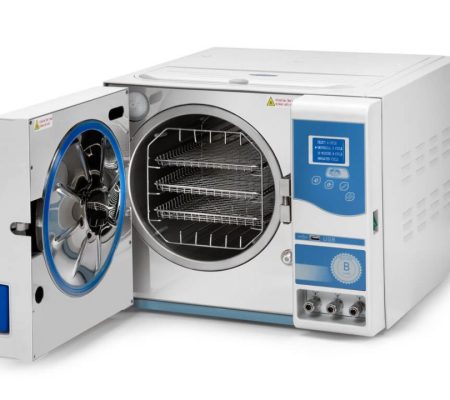Project Report For Autoclaves
Introduction
Project Report For Autoclaves is as follows.
An autoclave is a mechanical sterilising device that employs steam under pressure to destroy bacteria, viruses, and even spores contained in the material placed within the vessel.
In an autoclave, the materials are sterilised by heating them to a certain temperature for a given amount of time. The autoclave, also known as a steam steriliser, is commonly used in healthcare institutions and other corporate settings for a variety of applications. Because it relies on moist heat sterilisation, the autoclave is claimed to be a more effective technique of sterilising.
Solids, liquids, hollow objects, and other devices of various sizes and forms can all be sterilised in autoclaves. Examples of this might include, among many others, medical devices, pharmaceutical items, and lab equipment. Culture media, autoclavable plastic materials, solutions, and water, as well as specific glassware, pipette tips, plastic tubes, and biohazardous waste are further examples of objects that autoclaves may sterilise.
Autoclaves are employed in a variety of contexts because they are efficient in eliminating all traces of microbial life. In reality, autoclaves are used in beauty parlours and tattoo parlours to sanitise their equipment. Because they can eliminate bacteria that are resistant to boiling water and other powerful detergents, autoclaves are dependable sterilising tools.

Types Of Autoclaves
1). Pressure Cooker Type/Laboratory Bench Autoclaves (N-type):- The use of this autoclave is commonplace worldwide. It contains a pressure gauge, a safety valve, and an air and steam discharge tap. It also contains an electric immersion heater at the bottom of the chamber.
2). Gravity Displacement Autoclave:- These are frequently employed in lab settings. This autoclave produces steam within the chamber using a mobile heating element for the best possible sterilization. In comparison to other autoclaves, it is also quite affordable.
3). Positive Pressure Displacement Autoclave (B-type) :- The steam for this kind of autoclave is produced in a separate steam generator unit, which then feeds the steam into the autoclave. Since steam may be produced in a matter of seconds, it is said to be speedier.
4). Negative Pressure Displacement Autoclave (S-type):- Vacuum and steam generators are both included in negative pressure displacement autoclaves. While the steam generator, like the positive pressure displacement autoclave, creates heat and transfers it into the autoclave, the vacuum generator suctions out all the air from inside the autoclave. The most costly and most well-regarded autoclave is this one.
Get Completely Custom Bankable Project Report
Market Potential of Autoclaves
The autoclave market, which was worth USD 1.99 billion in 2021, is predicted to grow to USD 3.00 billion by 2029, with a CAGR of 5.25% from 2022 to 2029.
The growth in surgical procedures requiring complicated surgical tools is driving up demand for steam autoclaves. Steam autoclaves are in great demand since they are nontoxic, fast microbic, and sporic and steam sterilisation is growing in popularity in healthcare settings. There is a great need as a result of the growing requirement to decontaminate microbiological waste. The usage of steam autoclaves is expanding along with the prevalence of nosocomial infections. The capacity of autoclaves to sterilise makes its use advantageous in clinics, hospitals, and other healthcare institutions across the world.
The recent development of modern digital autoclave systems with shorter cycle durations and an interactive screen to highlight cycle phases during sterilisation would provide the autoclaves market a boost in terms of growth. The introduction of interactive digital interfaces inside medical device systems is expected to propel the industry forward in the coming years. Recent industry improvements include the advent of automated autoclaves for dentistry practise, as well as the acceptance of bench top modalities in locations with limited outreach. Because of the aforementioned variables, the industry will most certainly experience favourable development.
Due to their excellent sterilization and disinfection abilities, autoclaves are always in demand by research and development organisations. They are widely used for things like managing biological waste, sterilising tools and equipment, and removing dangerous microorganisms from the workspace. The need for the expansion of the global market for autoclaves has recently been supported by the increase in spending on research anddevelopment models.

